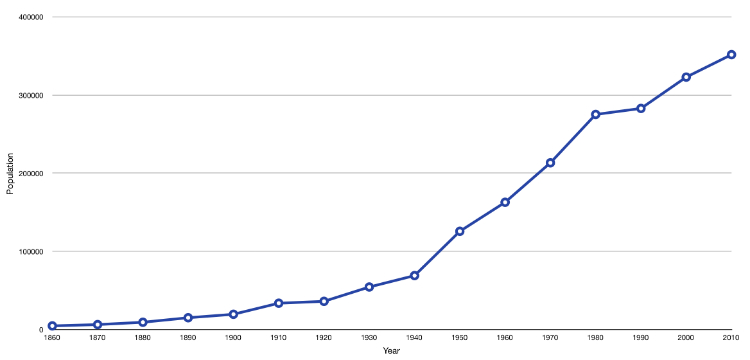More than 5 billion people use mobile phones worldwide, and in the United States, smartphone penetration stands at nearly 70%. This means that for marketers, mobile marketing is a juicy opportunity. As web users increasingly move away from desktop computers and onto mobile devices, mobile marketing will play a larger role in the advertising ecosystem – but it’s difficult to do well.
While it’s true that mobile marketing offers a powerful opportunity to engage new customers and reach new audiences, it isn’t always effective. Consumer trust in advertising is low, which means simply putting ads in front of users isn’t enough: if all you’re focusing on is CPM’s (cost per thousand impressions), you’re almost guaranteed to fail.
To succeed in mobile marketing, you need to have a deep understanding of the impact of your campaigns on your business – and if something isn’t working, you have to understand where the problem is. The only way to achieve that is through analytics. And in particular, you have to know which metrics to pay attention to.
So where do you look?
Here are the most important KPIs for mobile marketing:
Sales Revenue
Building your brand is great – but ultimately, it’s about the bottom line. Nothing really matters if a marketing campaign isn’t generating new revenue for your business. At the bedrock level, you need to understand how much money your campaign is bringing in so you can determine if it’s worth your while.
Cost to Acquire a Customer (CAC)
CAC refers to the amount of money you have to spend, on average, to convert a brand new customer. You can calculate CAC both on a per-channel basis and in general, for your entire company. For example, if your mobile marketing campaign costs $3,000 and brings in 300 new customers, that gives you a CAC of $10 for the campaign. At the same time, if your company spends $100,000 on marketing annually and brings in about 5,000 new customers per year, your company-wide CAC is $20.
In this example, CAC for the mobile marketing campaign is just half of the average CAC for the company – which means it’s a good investment. Calculating CAC on a per-channel basis like this is important because it allows you to see what your highest-ROI marketing channels are. Once you know that, you can double down on what works. This is a core principle of growth hacking, and it applies whether you’re running a growth user acquisition campaign for a new digital product or trying to bring on customers for an established service business.
Customer Lifetime Value (LTV)
Lifetime value refers to the average amount of revenue that any new customer will provide the company over their entire lifetime as a customer: this factors in the average value of a purchase, frequency of purchases, customer retention – everything. LTV is one of the most important metrics you can understand for any business, and it applies just as much to mobile marketing.
LTV is powerful because it tells you, on a per-customer level, exactly how much you can spend on marketing and still get positive ROI. If the LTV of your customer is less than the CAC (assuming you’re factoring overhead expenses into your CAC number), then you have a profitable enterprise and you’re ready to hit the gas and scale – period. But if CAC exceeds customer LTV, it doesn’t matter how many new customers you bring on: you’re still losing money.
Similar to CAC, LTV can be calculated both on a company-wide basis and also for an individual marketing channel. While calculating LTV per-channel is more onerous and requires more extensive analytics, it can be a powerful strategy because it helps to determine the true profitability of each marketing channel.
Click Through Rate (CTR)
CAC and LTV are both metrics concerned with overall value, but on a more granular level, CTR is a vital performance metric for any mobile marketing campaign. CTR tells you the percentage of people who click on your ad (or click a button on a landing page, or any other action that matters). For example, a CTR of 3% tells us that for every 1,000 people that see our mobile ad, about 30 of them will click on it and drop down to the next level of the funnel.
It’s important to note here that CTR isn’t necessarily important in itself. Whereas CAC and LTV directly measure the effect of a campaign in revenue, it’s entirely possible to have a CTR of 100% and still make $0 in ROI from your campaign.
What makes CTR important is that it can help you identify where problems lie. You might know that you’re spending 50% more on an ad campaign than you’re bringing in – but all that tells you is that something is wrong. It doesn’t tell you what. However, if our landing page in this campaign converts at 10%, yet we have a CTR for mobile ads of 0.01%, we’ve found our weak spot: the product sells, the landing page is excellent, we just need to switch up the ad design to improve click-through rate.
Total Conversions & Conversion Rate
In our last example, we brushed up on another important metric for any marketing campaign: conversions. This refers to the total number of people who ended up becoming a customer. Out of all the people that saw the ad, this is how many ended up giving money to the company. This number can also be calculated as a percentage to provide us with the conversion rate, both of a campaign or of any individual piece of that campaign.
Retention
Some businesses operate on a one-and-done model where they only care about getting customers to purchase a single time – but for most businesses, especially digital products or subscription-based businesses, getting customers to stay with the company is just as important as getting them to convert. This is where retention comes in.
Retention tells us the percentage of new customers who stay customers. High retention is a very good thing in that it tells us it’s a good idea to spend money bringing people to the company or the product. If we do, we know they’ll stay with it. Conversely, low retention signals there may be some problem with the product, as it’s not compelling enough to keep users engaged.
Similar to the other metrics, we can calculate retention both as a general figure and on a per-channel basis. Even better, we can calculate retention for individual market segments or customer demographics. This is particularly powerful for marketers, as it gives insight into what demographics make the most profitable customers, allowing us to target our ad spend to market segments that’ll produce the greatest ROI.
Cost Per Install (CPI)
Cost per install only applies if you’re marketing a mobile app, but it’s still worth mentioning. Practically speaking, cost per install is closely tied to CAC – but they’re not quite the same thing. For a mobile app that monetizes only off of ads, we can think of CPI and CAC as equivalent. But if the monetization model works on in-app purchases, CPI doesn’t tell us the cost of acquiring a customer – just of a user. CAC would have to factor in whether or not those installs actually led to purchases.
Viral Coefficient
Here’s where things get really interesting. Viral coefficient tells us the number of new organic customers that any new customer will bring in, either through word of mouth, direct referrals, or any other medium. For example, if every new customer ends up getting one of their friends to be a customer as well, we have a viral coefficient of 1. If about half of our new customers get one friend to join and the other half get two friends onboard, we have a viral coefficient of 1.5.
This is powerful because once we achieve a positive viral coefficient for our product, we have almost guaranteed growth. At this point, a new customer is actually worth more than their lifetime value, because they’ll bring on new customers themselves – who will bring on new customers once again, and so on and so forth. Viral coefficient is most traditionally applied for digital products in the context of users, but the same principles apply to any product or service.
Cost Per Thousand Impressions (CPM)
We mentioned this briefly in the intro, but cost per thousand impressions, or CPM, still bears repeating. Normally, this isn’t something you have to calculate. Most mobile ad networks will give you an outright rate for CPMs, and it’s often how mobile ad campaigns are priced.
Cost Per Click (CPC)
Cost per click is another metric that you won’t normally have to calculate yourself. If you’re running a pay per click (PPC) ad campaign, your ad network will likely tell you the cost per click outright. CPC is a little more meaningful than CPM because it’s based on a desired action we want users to take, but it still only measures things at the top level of the funnel: it’s a portion of the total CAC, but it doesn’t give us the same kind of intelligence.
Measuring Is What Matters
There are nearly infinite metrics you can calculate to measure the performance of your marketing and your business as a whole – but for mobile marketing, I’ve found these to be some of the most important. These metrics matter because they help you understand both the financial effect of your marketing campaign on your business and where you need to look if you need to improve your campaign’s performance.
Ultimately, though, what matters is to get in the mindset of measuring and analyzing performance. By tracking metrics like this, you can gain insight into what’s working and what needs improvement – both in your mobile marketing campaign and your business as a whole.
About the Author
Ben Lee is a tech influencer, one of Inc.’s 30 Under 30 Most Brilliant Entrepreneurs, and co-founder of Rootstrap, a digital creative studio that helps clients including Fortune 100 companies and early-stage startups with strategy, development, and growth. Rootstrap’s award-winning flagship service, Roadmapping, has helped over 500 entrepreneurs and startups hone their digital product for development & market success, with alumni raising an average of $250,000 in seed capital. Rootstrap regularly works with clients to develop mobile apps, web platforms, chatbots, and emerging tech projects, and past clients range from Snoop Dogg to Google and Spotify.










